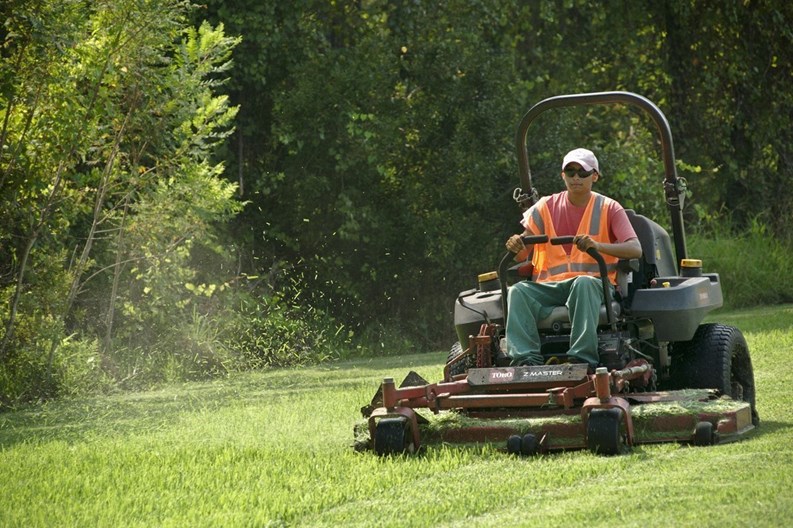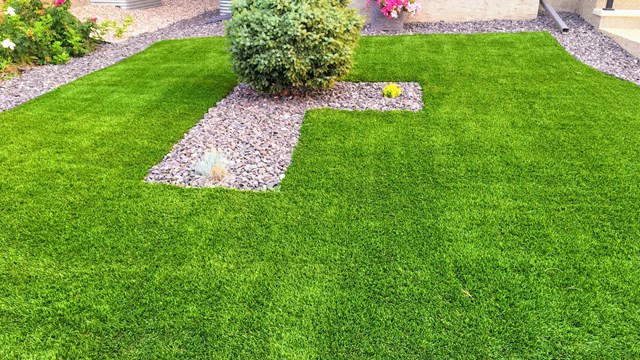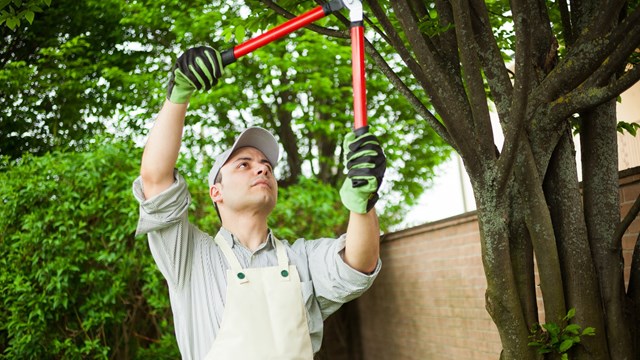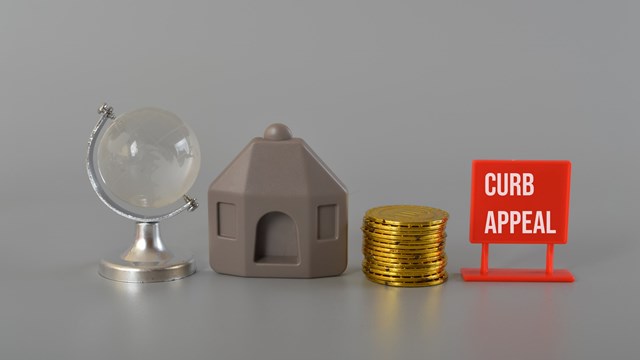New England is not exactly known for year-round sunshine and palm trees swaying in the breeze. At first glance, greenery, lawns and lawn care, may seem a non–issue for many Northeast residents—but like most Americans, New Englanders have a love affair with lush green turf.
Keeping grass green in New England’s widely-varying climate, where winter temperatures can average below freezing and summer months can bring triple digit temperatures, can be a challenge. And don’t forget those frosty, winter blasts off of the Atlantic Ocean that can wreck havoc on the healthiest lawn.
Condominium and home owners associations often find landscaping and lawn care the largest line item in the budget after insurance. Landscaping also adds to a property’s real and perceived value, not only for current residents, but for those seeking a new address to call home.
Nothing ups the ante on curb appeal quite like well maintained landscaping and colorful plants.
Winter Greens
David Brown, senior account manager at Greener Horizons, LLC in Middleboro, Massachusetts, says that only the heartiest, most durable grasses should be used for New England lawns. “We often use cool seed weather grasses, and fescues are often used,” he says. “There are all types of blends used around here but the most popular blend is bluegrass and fescue together. You get all of the advantages of one type and then where it has disadvantages the other one would fill in. That’s the main reason you use any blend. Fescues and bluegrass are the two most popular grasses around here.”
Suzanne Coventry, an account manager with ValleyCrest Companies, a landscaping firm with locations throughout New England, concurs with Brown. “The most common type of grass or ground cover in the New England area is a blend between fescue and Kentucky bluegrass, and you’ll also find rye,” she says.
It Isn’t Easy Being Green
An attractive lawn doesn’t just happen overnight. It requires effort and maintenance. The problems associated with lawn upkeep in New England can be unique. Urban pollution, salt exposure and snow plow damage and other urban stresses here can present a whole different set of challenges compared to most other states.
“There are all types of funguses and diseases that can afflict a lawn in the New England area,” says Brown. “One common thing that we run into a lot is red thread. It’s a fungal disease. It adds red coloring to the lawn and when conditions are too wet, you see it a lot in the late spring and early summer. Then there’s the dollar spot. The dollar spot will show up like a little, white round spot on the lawn.”
Experts interviewed say that the most obvious sign of a serious lawn problem is discoloration. When a lawn turns black or when grass becomes powdery, those are signs of fungal infections.
“Another common problem that we have seen in the spring is powdery mildew,” says Coventry. “That happens if it’s a really wet spring, and last year because of the drought we had issues in regards to more turf stress.”
Just what is it that stresses your community’s lawn? For the most part, the experts say, stress comes from conditions at either end of the spectrum: Too much water, too little water; too much fertilizer, too little fertilizer. Other sources of stress, the professionals say, include excess pesticide, high temperatures and watering t the wrong time of day.
While the organisms that cause lawn diseases are “almost always” present in the air or soil, they are most likely to gain a foothold when the grass is under stress.
When it comes to weeding and feeding the landscape, there are a host of environmentally-friendly products on the market. In the hands of a certified lawn care professional, these products will enhance the lawn and landscaping. At no time should an untrained person apply these products since there are so many variables involved with a correct application.
State by State
In New England, each state has its own rules and regulations regarding services like pesticide application. In Massachusetts, for example, anyone who applies any form of pesticide for hire must be licensed by the state, and associations should make sure that their lawn care providers are properly licensed. Connecticut promotes the use of organic fertilizers and pest controls, through the use of Integrated Pest Management (IPM) techniques. But a pesticide-free lawn may exhibit the occasional imperfection, while still being vigorous.
Javier Gil, president of J. Gil Organic Landscaping in Hampton Falls, New Hampshire, says the first thing that should be done prior to lawn maintenance is a soil test. “I take a soil sample and send it to the lab and when I get the results back I know exactly how many products I’ll use for the season. Chemically, you put the same things in every season but organically you only use what is needed. I use a lot of organic compost that I get locally so I don’t have to go very far to get it. I use a lot of chicken poop, seaweed, soy, corn and compost tea. Compost tea is a liquid extract of compost. You take the beneficial organisms in compost and then you spray it, not only on grass, it can also be sprayed on trees, shrubs and flowers. It’s good for everything.”
A balanced diet is as important to a community’s lawn as it is to the families living in the condominium. If provided with appropriate levels of fertilizer, the plants will develop a dense root system, producing a lawn that can resist invasion by diseases and weeds. And like people, turf gets hungry on a regular basis. Proper fertilizing throughout the growing season is essential.
The balanced diet that lawns crave comes from a combination of nitrogen, phosphorous and potassium. Unbalanced diets can lead to problems like spindly blades of grass rather than the lush carpet that everyone wants to see.
Coventry agrees that the most vital factor in maintaining a lawn is fertilization. “Fertilizing is probably the most important thing a homeowner or groundskeeper can do to keep their lawn attractive and healthy, that’s our biggest thing,” she says. “It’s not a ‘set it and forget it’ product. The best thing is to do a really effective crabgrass preventative in the spring with a pre-emergent and then a really solid program that has about four pounds of nitrogen per thousand square feet for fertilizing. We recommend a really good fertilizing program if you’re residential or a homeowner. We recommend that you fertilize every six weeks at the commercial level. Basically as far as the fertilizations go, you’re going to go with the pre-emergent in April and you’re going to go with fertilization in June and another fertilization in September. Those are the three key points.”
“Aeration and over-seed is a good thing,” adds Brown. “Aeration would be pulling plugs out of a lawn and letting them settle in. Aeration adds oxygen into the lawn and gives it a way to breathe and it reduces compaction. If you’re on a lawn where kids are running around or pedestrians are walking through it, that compacts the soil and aeration can alleviate that and over-seeding will help thicken the lawn and it also helps to squeeze out weeds by making it more dense with the grass that you prefer.”
Brown believes that there are specific months that certain lawn-care tasks should be undertaken. “Every lawn is different and we always apply based on the needs of the turf,” says Brown. “But a typical example of our lawn care is: early spring, we apply fertilizer with crabgrass and broad leaf weed control; late spring, it’s fertilizer with broad lead weed control; early summer, it’s fertilizer with broad leaf weed control and grub control; late summer, fertilizer with broad leaf weed control and fall fertilizer with lime application.”
Common Mistakes
Lawn care professionals say that a few mistakes homeowners make when caring for their lawn are over-watering and mowing the blades too short. “The number one mistake people make when caring for their lawn is over-watering,” says Brown. “Most people think that to have a healthy lawn you need to add water, more water and more water. Typically, it seems like the right thing to do but it isn’t, even in hot and dry conditions. And you should always water in the morning. It gives and opportunity for the water to settle in and dry out during the day. If you water at night, you can introduce fungal problems into the lawn because it won’t have a chance to dry itself out.”
“Over-watering and mowing your lawn too short are two very common problems non-professionals make,” Gil agrees. “The lawn should be mowed at around three or four inches tall because if you keep the leaf blade longer then the root system is going to go deeper into the soil. So whenever you have drought periods, then organic roots are going to be very deep into the soil and they are going to be able to reach down into the water. Most chemical lawns are mowed like an inch-and-a-half to two inches, so the root system is going to be very shallow. So whenever you have a drought, the grass is going to die because you are going to need to water it more often because it has such as shallow root system.”
When shopping for expert lawn maintenance advice or services, the Internet and websites provide an excellent way to do the homework and research. Experts note that many lawn maintenance companies offer free consultations and design options, so the idea is to use the Internet as a tool and then call in the professionals. Landscaping and lawn maintenance are not areas for even the most robust HOA or community association to undertake. The climate conditions, pests, and weeds native to New England are challenging for even a seasoned professional. Hire the best company available to your association and then relax and enjoy the view.
Anne Childers is a freelance writer and a frequent contributor to New England Condominium and other publications. Staff writer Christy Smith-Sloman contributed to this article.







Leave a Comment